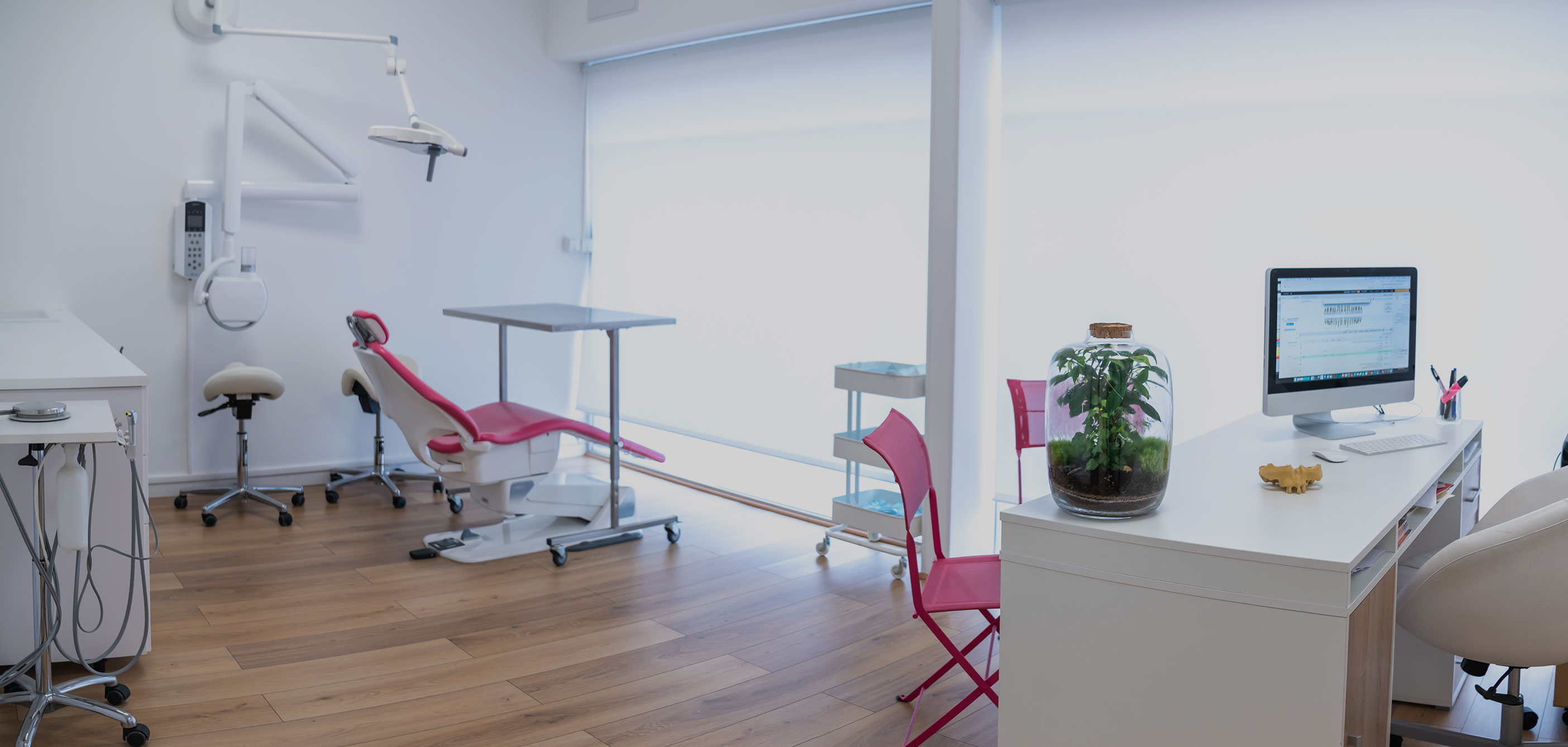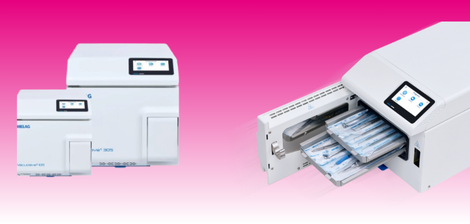The dental equipment required in any surgery has many demands made upon it. It needs to be:
- Robust enough to withstand heavy-duty wear and tear
- Resistant to high levels of decontamination and cross-infection control
- Mobile and discreet in some cases, and aesthetically pleasing in other
- Efficient and reliable
- An enhancement of any patient experience.
Here, we look at the top five.
1. Chair
A dental chair is among the biggest investments in equipment a practice owner will ever make and needs to appeal on many levels – to the day-to-day practice of a clinician, to fit with practice design and suit the comfort needs of patients. A chair should be well engineered, robust, with good support and of good quality material.
History The focal point of any surgery, the dental chair has traditionally had a poor press. Often used as a metaphor for fear and trepidation, over the years the dental chair has been portrayed in films as a place of pain where horrifying and torturous scenes are played out. Entertainment value aside, a dental chair needs to be a place where comfort is assured. The reclining dental chair has been around for some time – London dentist James Snell designed the first one in 1832. Lifespan With proper maintenance and regular servicing, the lifespan of a dental chair can be as much as 20 years.
Recent advancements Dental chairs are now more of a ‘treatment centre’ than just the place where a patient sits. Its flexibility has expanded and comfort is an often-cited measure of a ‘good’ dental experience. Dental chairs can be tailored to suit all types of patients and all styles of practice – from knee-break chairs for the elderly and less mobile and compact chairs engineered to suit smaller surgeries to heavier weight-bearing chairs for bariatric patients and those that recline flat for paediatric care. Ambidextrous chair designs meet the needs of various clinicians all in one surgery, whilst a major consideration is, of course, the ergonomics of a chair.
Features to look out for…
The design of a dental chair should allow close proximity to a patient whilst encouraging good posture, limiting over-stretching.
- It should be able to withstand rigorous infection prevention and control measures.
- It should be aesthetically pleasing as well as functional and fit well with your overall design and branding.
2. Stool
The occupational hazards of dentistry are well documented and a stool should work in harmony with body movement. The rule of thumb is to ‘practise what you preach’ i.e. prevention. Investment in a good quality stool that suits your weight, height and working practices will help to ensure a lifelong career of comfortable dentistry.
History Up until the 1970s, dentists stood up to do dentistry. But the profession grew wise to the benefits of delivering care while sitting down. With fatigue, poor neck and back health, low concentration levels and a drop inefficiency all associated with standing up, the profession literally changed its position on dental care delivery. Lifespan If maintained and service regularly, an operating stool can last 15 years.
Recent advancements Loupes, lighting and integrated computer technology has limited the long periods of time dentists spend sitting in awkward positions, with stools now tailored to each clinician’s specifications. They can suit gender, height, weight and comfort with inbuilt hydraulics to ensure easy adjustments. Wheel design has advanced to ensure ease of movement.
Features to look out for…
- Ergonomics. Ergonomics is more than just a bit of a buzzword. It is an interdisciplinary science that studies the various ways to improve the quality of life at work by optimising the interaction between worker and working environment. The focus in dentistry is very much about creating a functional but low-stress workspace in what is a confined area.
- Height adjustment. Consider one with hydraulic lifts that means you can adjust your height smoothly – from patient to worktop.
- Adjustable backrests. These allow for excellent lumbar support.
- Movement. Rubber-surrounded wheel castors should provide effortless mobility.
- Style of seat. This is a personal choice. Some dentists argue that conventional stools force the spine out of its natural, healthy 'S’. However, many stools now come with contoured seats and adjustable backrests to provide the necessary lumbar support. Jumper, or saddle stools, are designed to tilt the pelvis to a more neutral position. Men often favour this style of stool because the seat is wider, whilst a narrower seat is often preferred by women. Stools can also come with an adjustable seat tilt.
- Fitting. Made-to-measure stools with specifications to suit a clinician are also an option.
3. Autoclave
Sterilisation is arguably one of the most important processes that takes place daily in a practice. Dentistry is a busy environment, so an autoclave needs to be easy to use, long-lasting and reliable. It needs to be serviceable and well maintained with parts that are easy to order.
History The first autoclave (essentially a pressure cooker) was invented by French physician Denis Papin in 1681 but was remodelled for medical and scientific use in 1879 by microbiologist Charles Chamberlaud.
Lifespan Typically, an autoclave can last for 30 years-plus if regularly serviced and maintained. Recent advancements Autoclaves have developed hugely in the last few years with advanced technology to ensure safety and durability via user-friendly functions, such as touch-sensitive display panels, that ensure best practice sterilisation standard with every cycle.
Features to look out for…
- Size and space. Consider availability of space and quantity of load. They range from table-top autoclaves to large bulk types. The cycles need to suit the sterilisation of specific loads. What floorspace is also a major consideration.
- Water feed and utilities requirements. The water quality in a practice can affect effectiveness. There also needs to be proper utility sources available within two metres of the autoclave, such as water, steam, electricity and drainage.
- Water-saving technologies. Traditional autoclaves use an enormous amount of water so dentists are increasingly considering greener options to reduce their carbon footprint.
- Aftersales support and servicing. Any downtime caused by a breakdown affects productivity and profit so, ideally, help will be available during operating hours and there will be a same-day service. A company that offers servicing should stock common replacement items.
- Warranty. Expect a minimum warranty of one or two years on parts and labour and at least 10 years on the autoclave pressure vessel.
4. Suction pumps
A quality suction system is essential in minimising potential health risks through airborne particle during aerosol generating procedures. History Otto von Guericke invented the first vacuum pump in 1650 by, which preceded by the suction pump. In the 1960s, new suction systems allowed patients to be treated in a supine position for the first time. More recently, more eco-friendly dry vacuum systems have become an alternative to the older wet systems, saving water and reducing wear from water minerals. Since then, the development of this vital piece of equipment has been driven by technology and innovation to include complex systems of suction unit, separation and amalgam separation to fit in with treatment units in surgery, smart controls and energy-saving features.
Lifespan Durable and built to last, a suction pump will need to be regularly safety checked and serviced and maintained. For wet systems, a water filter can greatly reduce wear and tear.
Recent advancements Suction pumps have greatly reduced in size with a smaller footprint to fit discreetly into any smaller surgery. Some are now powered by smart systems that optimise control, saving energy costs and minimising noise without compromising output. Some can be controlled remotely whilst others come with a ‘plus and pay’ facility making integration in the digital monitoring of the surgery supply systems seamless.
Features to look out for
- Dry dental vacuum pumps, which provide many benefits over older wet models. Are you seeking a standalone suction pump, or one that fits a central suction system?
- Size and capacity – how many users and how many stations will it service?
- Speed, power and noise levels.
- A long history of efficiency and safety.
5. Compressor
Compressors lie at the heart of any surgery. They filter, compress and then store dry clean air, eliminating bacteria, while powering rotary instruments and protecting dental units. They must therefore be well-designed, robust and reliable as well as meet stringent hygiene controls.
History A ‘blasting machine’ invented in 1776 by John Wilkinson in 1776 is often cited as the original basis for later designs of mechanical air compressors, while the first compressor plant was created by Austrian engineer Viktor Popp in Paris in 1888. Lifespan In full-time operation, a rotary compressor can last up to 20-30 years, with regular servicing and good maintenance whilst a reciprocating compressor has an expected lifespan of 10-20 years.
Recent advancements Oil-free dental air compressors mean less maintenance with fewer filter changes and greater reliability. Rotary compressors are more durable and more cost effective with better energy efficiency than reciprocating compressors.
Features to look out for
- Rotating or reciprocating?
- How many chairs/surgeries will it service?
- Reliability.
- Noise levels and options for a sound reducing.
- Servicing and support availability.
- CQC certification.
- Length of warranty.




